Review: Prime Rocket - Another Carbon Downhill Spaceship from Eastern Europe
Prime Bicycles aren’t bikes you see every day, which explains why the Rocket garnered so many puzzled looks, but the Polish brand graced our pages in the spring with their Thunderflash enduro bike. For the keen-eyed World Cup fans out there, you may have spotted this stealth midnight blue bike under the guide of the British pilot, Taylor Vernon.
The 195mm travel Rocket runs on dual 29” wheels and casts a similar shadow to their shorter travel offering with Prime’s dual-link suspension design. A unique aspect of the Rocket that you don’t see very often on mountain bikes is the proprietary carbon seat post, which adds to the stealthy lines and slick packaging. However, our concerns didn't go unwarranted.
The 195mm travel Rocket runs on dual 29” wheels and casts a similar shadow to their shorter travel offering with Prime’s dual-link suspension design. A unique aspect of the Rocket that you don’t see very often on mountain bikes is the proprietary carbon seat post, which adds to the stealthy lines and slick packaging. However, our concerns didn't go unwarranted.
Rocket Details
• Full carbon frame and links
• Travel: 195 mm / 200 mm fork
• Wheel size: 29"
• 63.5-degree head angle
• Chainstays: 450mm
• Reach: 455, 475, 500mm
• Weight: 16.3 kg / 35.9 lb
• Price: €5,599 / $5,999 - €7,699 / $8,199 USD
• Frame only : €3,699 / $3,899 USD
• primebicycles.com
• Full carbon frame and links
• Travel: 195 mm / 200 mm fork
• Wheel size: 29"
• 63.5-degree head angle
• Chainstays: 450mm
• Reach: 455, 475, 500mm
• Weight: 16.3 kg / 35.9 lb
• Price: €5,599 / $5,999 - €7,699 / $8,199 USD
• Frame only : €3,699 / $3,899 USD
• primebicycles.com
Our “R” build arrived laced with staple downhill components from Ohlins, DT Swiss, Renthal, and SRAM to the tune of €7,599 EUR. Even without the top-level build that includes Enve carbon wheels, the Rocket comes in at a very respectable weight of 16.3kg.
Contents

Both upper and lower links are constructed from carbon fiber. The drive-side features two rows of bearings.
Frame Details
Prime didn’t mess around when they set out to build this downhill race machine - even both of the links are carbon to keep the weight down. The standout component that sets this bike apart from other bikes is the aerodynamic seat post. This stabilizer wing undoubtedly adds to the Rocket’s fighter jet looks and is intended to keep the post from rotating in a slide-out.
More commonplace features, like fully guided internal cable routing, sealed pivot bolts, and double-row bearings on the drive side should cut down on the bike chore though. With that said, when it comes time to change the housing, the process is a task that requires removing the rear wheel and shock to access the clamps. The lines follow a complicated path over the BB shell, under the lower link and through the chainstay. Changing the housing is an involved process due to the amount of clamps that hold them in place, but that’s a trade-off for eliminating any rattling noises or paint chafing.
A 49/56mm headtube is the only place with room to make geometry adjustments and there aren’t any integrated fork bumpers present. Further details include plenty of padding at the bottom of the downtube to protect against rock strikes and along the rear triangle stays to settle down chain feedback.
I added a downtube shuttle guard to protect the paint and large diameter, thin-walled tub, but when thinking about longevity, it's reassuring to know that Prime backs up its products with a lifetime warranty against manufacturing defects.
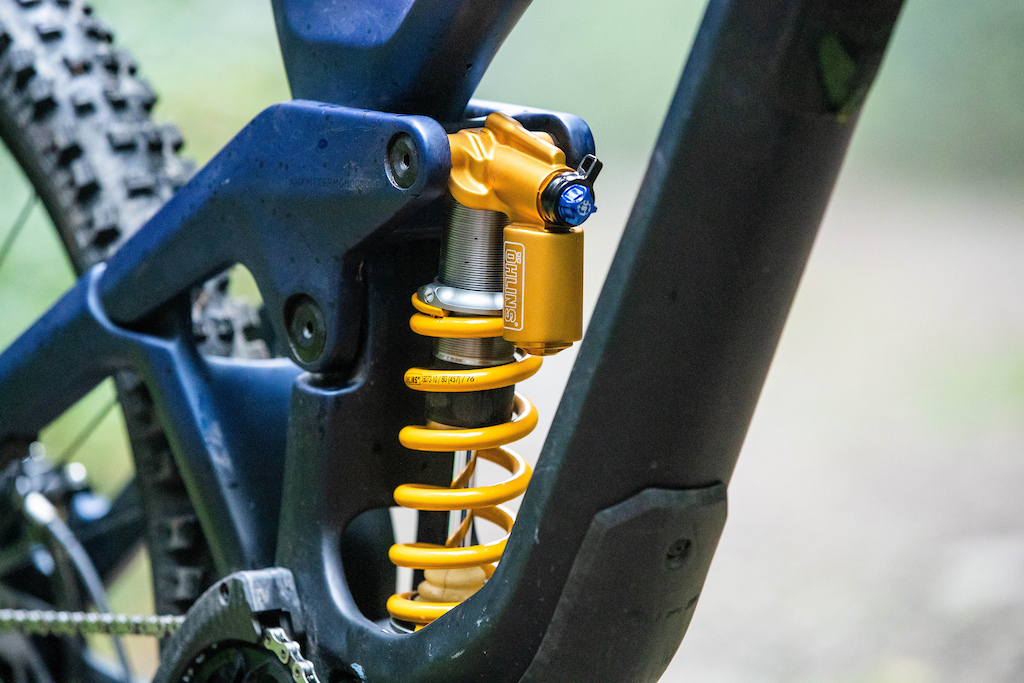
Prime says the Rocket can run on a coil or air damper. I rarely found the bottom on the 195mm of travel with a 457 lb/in spring installed on the Ohlins TTX22M.2. The trunnion mounted shock and two-piece rocker never raised any concerns. An integrated carbon molded fender bridges the uprights between the chain and seatstays adding to a stiff, responsive frame.
Suspension Design
SHRED Dynamics is the title of Prime’s kinematic equation and that leads to a progressive leverage curve that is designed to ride between 30-40% sag. The Rocket doesn’t offer any adjustments for changing the progressive, but they do state that the suspension is compatible with an air shock too.
Prime also arranged the links to provide a high anti-squat value, which starts at a whopping 200%, drops to about 100% at sag, and stays around that mark through all of the gears. The combined lightweight build and resistance to bobbing make the Rocket an efficient pedaler for a 195mm travel downhill bike.
Geometry
When a niche brand builds a carbon bike, you seldom see a large span in frame sizes due to the costly molds. Prime builds the Rocket in three sizes with reach numbers of 455, 475, and 500mm. Each one of those uses the 450mm long chainstays. Prime informed us that there is a new link in the works that will accommodate a 27.5"' and will bring minor tweaks to the geometry.
When it comes to angles, the Rocket isn't the slackest of downhill bikes with a head tube that rests at 63.5 degrees. Inspecting the fork also shows a 54mm offset crown, which could be shorter since most enduro bikes with a sub-64 head angle use a 49mm offset that feels more intuitive to steer.
Specifications
| Specifications | ||
| Price | $8999 | |
| Travel | 195 | |
| Rear Shock | ÖHLINS TTX 22 M.2 | |
| Fork | ÖHLINS DH 38 M.1 | |
| Headset | ACROS PRIME DOWNHILL | |
| Cassette | SRAM XG-795 | |
| Crankarms | SRAM X01 DH | |
| Chainguide | E13 LG1 PLUS CARBON | |
| Bottom Bracket | SRAM DH DUB | |
| Chain | SRAM PC-1170 | |
| Rear Derailleur | SRAM X01 DH | |
| Shifter Pods | SRAM X01 DH | |
| Handlebar | RENTHAL FATBAR CARBON | |
| Stem | RENTHAL INTEGRA | |
| Grips | ODI AG-2 LOCK-ON | |
| Brakes | SRAM CODE RSC | |
| Wheelset | DT SWISS FR 1950 CLASSIC | |
| Tires | MAXXIS ASSEGAI 29X2.5, MaxxGrip, DH casing | |
| Seat | SDG BEL AIR 2.0 PRIME | |
| Seatpost | PRIME AERO | |
Test Bike Setup
From there, I went on to slam the top crown down on the headset top cap.
After studying the geometry of Rocket, I decided that the size large with a 475mm reach, would best suit my figure. I trimmed the bars to 775mm so that my wings still had some length left to shift my weight front to back over the bike as needed.
The bike arrived with a 457 lb/in spring which put me smack dab in the middle of the suggested sag range at 35%. I ended up with two full turns of preload on the spring and the low-speed compression three-quarters of the way closed to reel in how eagerly the Rocket wanted to push into the travel from body inputs. The high speed compression primarily stayed in the "1" position (open) and the rebound dial was nearly wound all the way in due to the energy stored under heavy hits of the progressive leverage.
The Ohlins DH38 is a fork that I’m very familiar with and so I went right to my base pressure settings of 135 psi in the main air spring and 225 in the ramp-up chamber. That kept the ride height of the bars too tall in comparison to how quickly the rear suspension would ease into the travel. Searching for a more balanced ride, I'd jostle with the fork pressures, dropping the main chamber and adding more progression. That led to impressive grip but required more poise as to not disturb the front-to-rear weight balance.
The bike arrived with a 457 lb/in spring which put me smack dab in the middle of the suggested sag range at 35%. I ended up with two full turns of preload on the spring and the low-speed compression three-quarters of the way closed to reel in how eagerly the Rocket wanted to push into the travel from body inputs. The high speed compression primarily stayed in the "1" position (open) and the rebound dial was nearly wound all the way in due to the energy stored under heavy hits of the progressive leverage.
The Ohlins DH38 is a fork that I’m very familiar with and so I went right to my base pressure settings of 135 psi in the main air spring and 225 in the ramp-up chamber. That kept the ride height of the bars too tall in comparison to how quickly the rear suspension would ease into the travel. Searching for a more balanced ride, I'd jostle with the fork pressures, dropping the main chamber and adding more progression. That led to impressive grip but required more poise as to not disturb the front-to-rear weight balance.

Moving the big wheel machine around in between the tight goal posts of the Cypress downhill tracks isn't a chore.
Descending
Wrestling the roots and rocks of weathered downhill tracks isn’t always an advisable method to suss out a new bike, and so I brought the Rocket over to the Coast Gravity Park with its manicured berms and jumps on the inaugural outing. Those trails taught me all about the balance of the Rocket and the fork changes I’d need to make before tackling any natural forest puzzles.
There’s a common theme that runs in Prime Bicycles: the rider is positioned in the bike rather than on the bike. On paper, the BB drop and stack height appear within normal parameters, but that’s where the larger sag value comes in. This drops your feet well below the axles of the two 29” wheels for a secure, standing position. I’d still like to relax the head angle by a degree in order to create space between my hands and the front axle, slowing down the steering at higher speeds.
The Rocket doesn’t take much muscle to point in the right direction, which is surprising for a 29er in the new era of mullet DH bikes. It carries speed best when you let the suspension do the talking by keeping still and centered on the bike. If you try to be too dynamic and push into compressions, manual through rollers, or generally be overly enthusiastic on the bike, you’ll end up using too much energy pushing into the suspension's supple top end.

Standing low, in between the 29" wheels, is the Rocket's secret formula to cornering stability. I'd love to take this bike to the next level with an angleset to push the front axle further forwards and open up the wheelbase.
When it’s time to shut it down, the rear wheel floats actively under braking, although the Rocket does move the rider's weight about more than high pivot bikes, like the Antidote Darkmatter. It's a comprise that some riders can adjust to, and a trade-off for extra grip when the binders are pulled.
Some of those braking bumps are felt, and heard through the frame - it’s more about the large thin carbon tubes that resonate the vibrations rather than the chain feedback as the rear triangle is well padded. The frame itself is a stiff ride and I appreciated having those alloy DT Swiss wheels when bouncing through off-camber sections of trail.
Technical Report
Ohlins DH38 fork: The DH38 is still the cream of the crop when it comes to downhill forks if you ask me. Tuning the air springs does take some trialing. They are sensitive to a few psi in change, but the grip is top notch. Somehow, they always feel too soft in the parking lot yet offer support deeper down - maybe I’m just used to running other forks too firm to achieve what the DH38 provides.
Ohlins TTX22M.2 shock: The Ohlins coil sprung damper on the Rocket is full of juicy control, except for one small issue: top out. This isn’t the first TTX coil damper I’ve experienced this problem on either. When the bike is tracking the ground, you can’t feel this hiccup - only when you preload the suspension and hop the bike off the ground can you notice the tap of the coil returning to full travel.
The rebound tune could possibly be made slower too, since that adjuster was nearly closed.
Prime's Aerodynamic seatpost: I dig the looks, and fixed alignment of the aero seat post, but what happens if that proprietary carbon post becomes compromised in a tumble? Ironically, the Rocket fell victim to a transportation incident when an unsecured tonneau cover smashed down on the saddle hard enough to pull the fixing bolt through the head of the carbon post. Thankfully, a spare washer in the toolbox provided enough purchase on what was left of the post to salvage the next two days of riding in a rural riding location.
This may have been a freak accident, but from time to time, bikes can get catapulted in a crash. Toting a spare post around would be highly recommended. Prime has since added the seat post to their 5-year frame crash replacement program and is included in the lifetime warranty against defects.
Ohlins DH38 fork: The DH38 is still the cream of the crop when it comes to downhill forks if you ask me. Tuning the air springs does take some trialing. They are sensitive to a few psi in change, but the grip is top notch. Somehow, they always feel too soft in the parking lot yet offer support deeper down - maybe I’m just used to running other forks too firm to achieve what the DH38 provides.
Ohlins TTX22M.2 shock: The Ohlins coil sprung damper on the Rocket is full of juicy control, except for one small issue: top out. This isn’t the first TTX coil damper I’ve experienced this problem on either. When the bike is tracking the ground, you can’t feel this hiccup - only when you preload the suspension and hop the bike off the ground can you notice the tap of the coil returning to full travel.
The rebound tune could possibly be made slower too, since that adjuster was nearly closed.
Prime's Aerodynamic seatpost: I dig the looks, and fixed alignment of the aero seat post, but what happens if that proprietary carbon post becomes compromised in a tumble? Ironically, the Rocket fell victim to a transportation incident when an unsecured tonneau cover smashed down on the saddle hard enough to pull the fixing bolt through the head of the carbon post. Thankfully, a spare washer in the toolbox provided enough purchase on what was left of the post to salvage the next two days of riding in a rural riding location.
This may have been a freak accident, but from time to time, bikes can get catapulted in a crash. Toting a spare post around would be highly recommended. Prime has since added the seat post to their 5-year frame crash replacement program and is included in the lifetime warranty against defects.
Which Model is the Best Value?
I won’t lie - I love riding fancy bikes and am willing to shell out my own money on them too. Often there are more sensible choices on tap though and that'll leave extra funds to spend on critcal items like spare tires. There aren’t any aluminum frame options here, so the Rocket isn’t the most affordable bike, but you can save some cash and still get quality parts with the “S” build kit.
The savings are earned by resorting to alloy handlebars and a GX DH drivetrain. Spending money on a derailleur for your downhill bike probably isn’t the first item on your priority list anyways. The rest of the components still include the superb Ohlins DH38, durable DT Swiss FR 1950 wheelset, and the adjustable Code RSC brakes found on the "R" build kit.
How Does It Compare?
Take the Atherton 200M and stand it side by side against the Prime Rocket - they’re not too dissimilar with their rocker link driven shocks, but that’s about where the overlap ends. The suspension designs and frame construction are worlds apart.
The SHRED Dynamics of the Rocket uses a dual-link design, whereas the AM.200M features the complex DW6 with a floating chainstay. Both bikes carried speed well across chatter and staved off hard bottom outs, but the Rocket wasn’t as responsive when the trail required you to pull the bike off the ground.
The AM.200M’s braking characteristics also outperformed the Rocket. Although the Prime stayed fairly active, the Atherton remained on the ground and composed, not jostling the rider’s weight distribution forward. No doubt both bikes can be ridden hard, however, as a shorter rider who moves around the bike more, I found the Rocket a little “rocky” at times.
When talking about the carbon frames, the Rocket gives off a more hollow feel from the thin and stiff angular tubing. On the Atherton, the round tubes seem to help mute any feedback from the trail.
Looking at the frame specs and build options, the Rocket has fewer frame sizes to choose from, although neither bike has any geometry adjustments. In the AM.200M’s case though, the chainstays do vary depending on the frame size.
When choosing a build kit, Prime wins out on the options, and value, at least in terms of components. The Rocket’s killer S-build that we mentioned comes in at €1000 EUR cheaper than the AM.200M.2 and levels up on the suspension.

Bomb, brake, bomb - that's the nature of the tracks in our corner of the world. On a bike with such high progression as the Rocket, the suspension can load up and fire back if your weight balance isn't perfect. The grip and cushion are there when you time it right though.
Pros
+ Sensitive suspension tracks well through technical sections
+ Lightweight frame isn’t laborious to whip around corners, despite 29” rear wheel
+ Deep riding stance feels secure (when aiming straight down the trail)
Cons
- "Steepish" head angle and 54mm fork offset can lead to reservations when cornering at higher speeds
- The top-out experienced on the Ohlins TTX22 detracted from its otherwise stellar performance
- You won’t find a replacement for the proprietary seat post in your local shop
Author Info:
Must Read This Week
Sign Up for the Pinkbike Newsletter - All the Biggest, Most Interesting Stories in your Inbox
PB Newsletter Signup
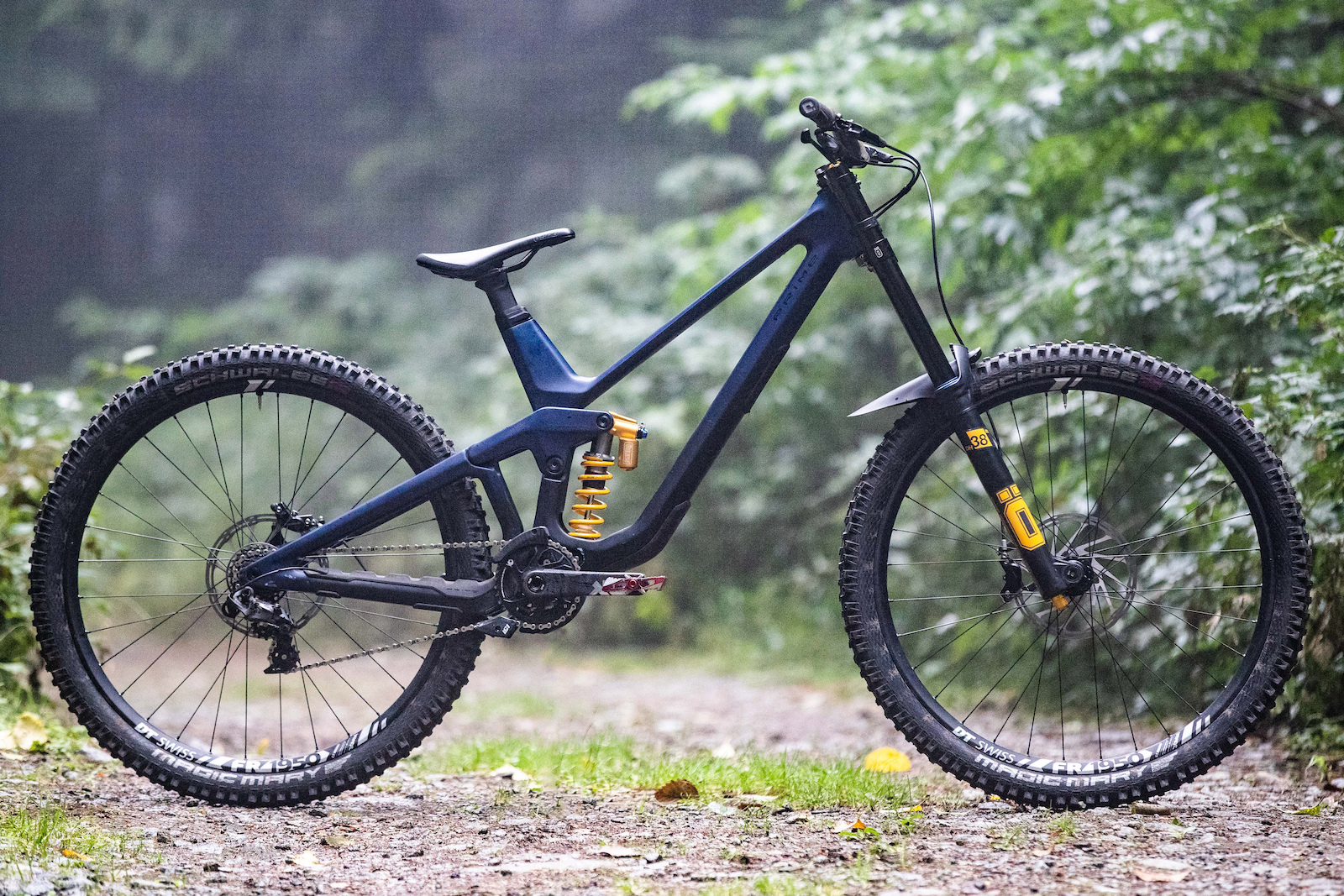
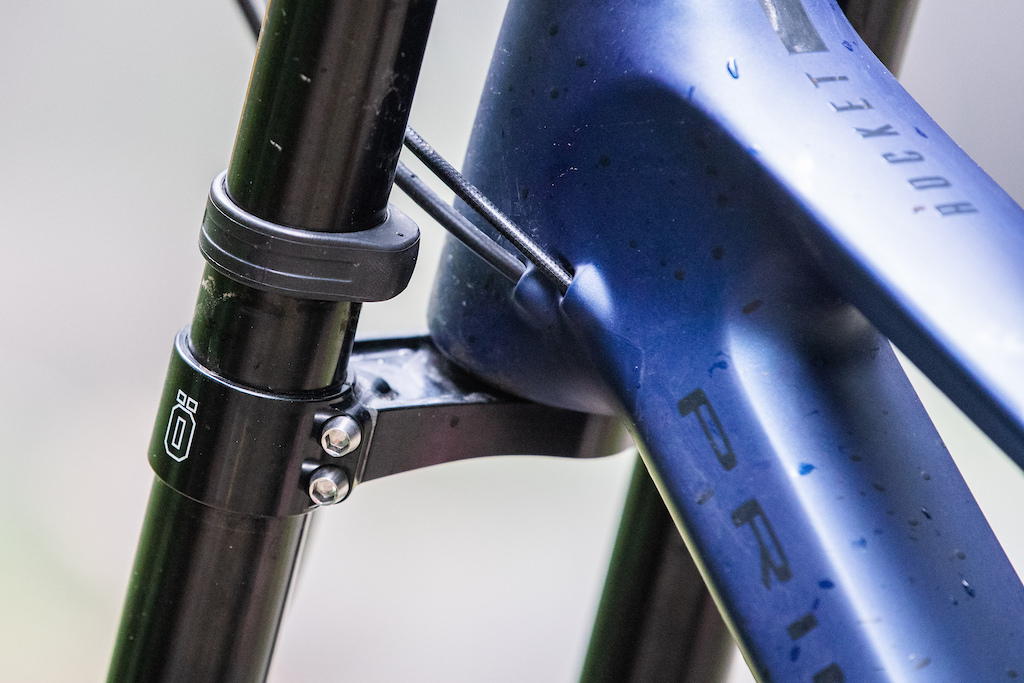




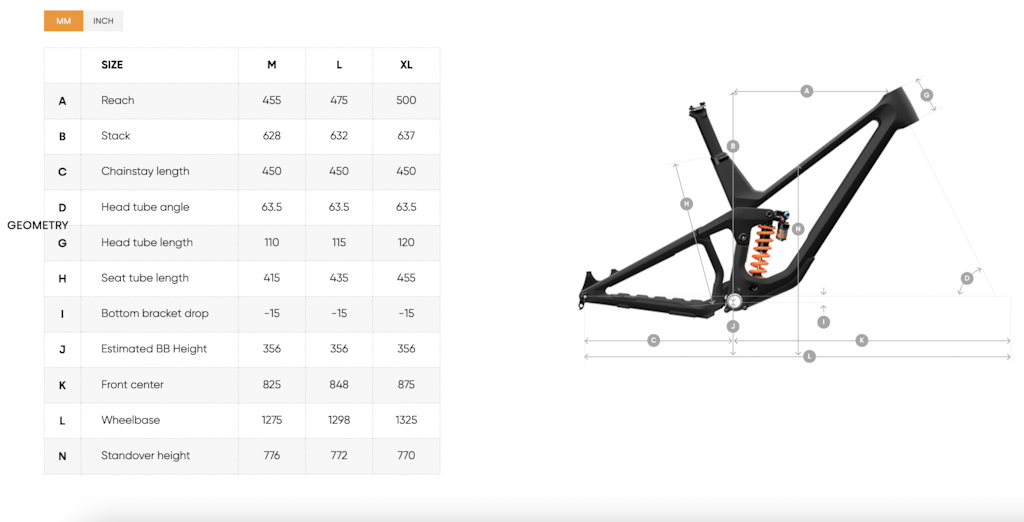

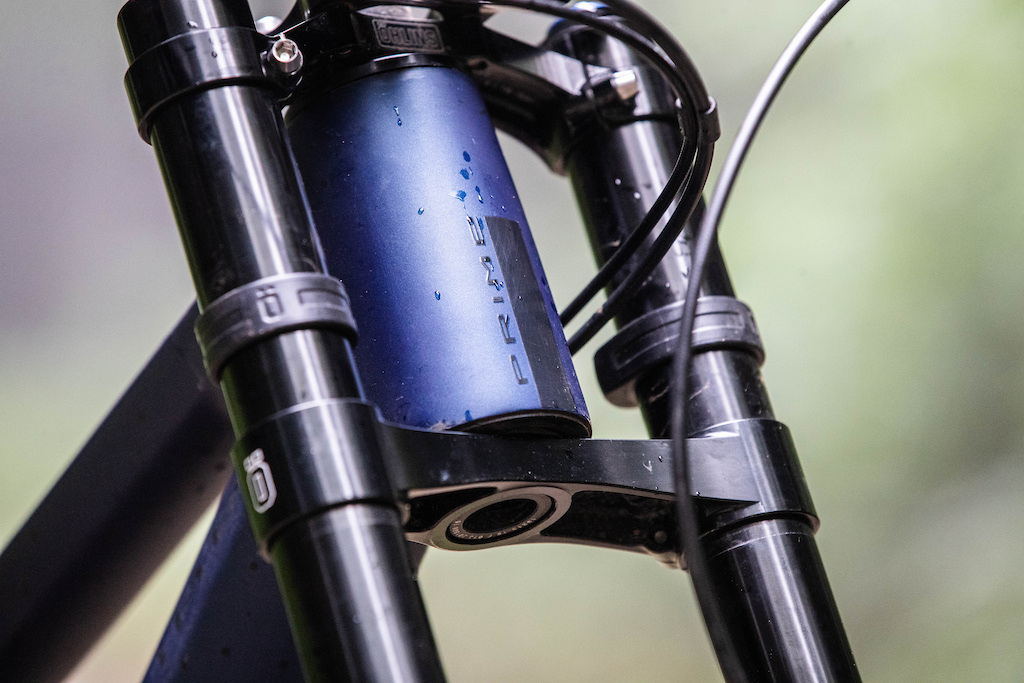



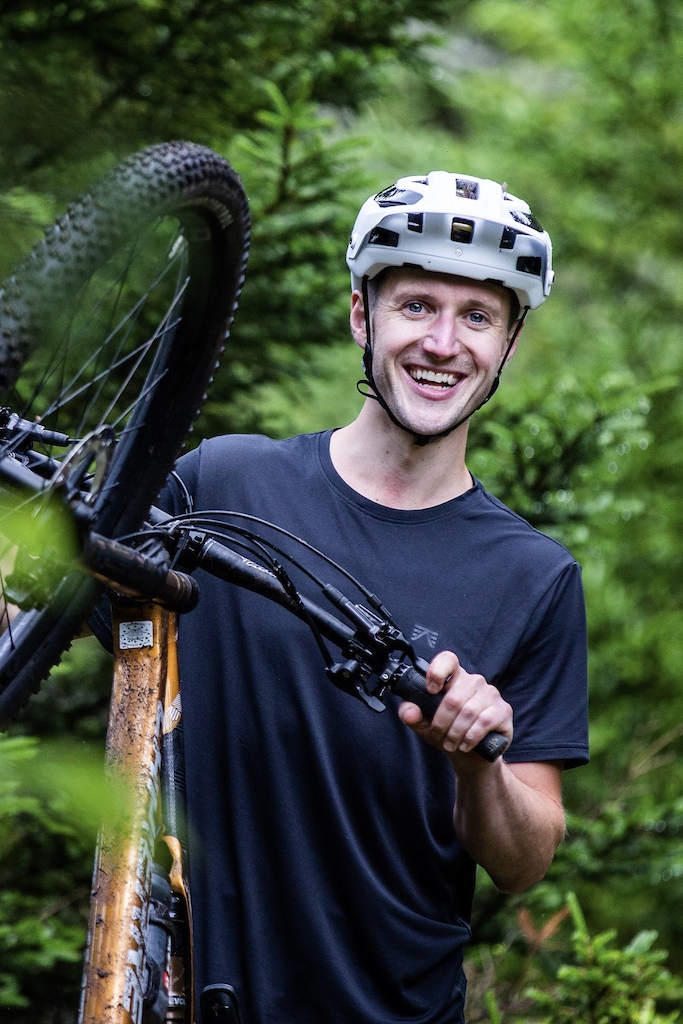

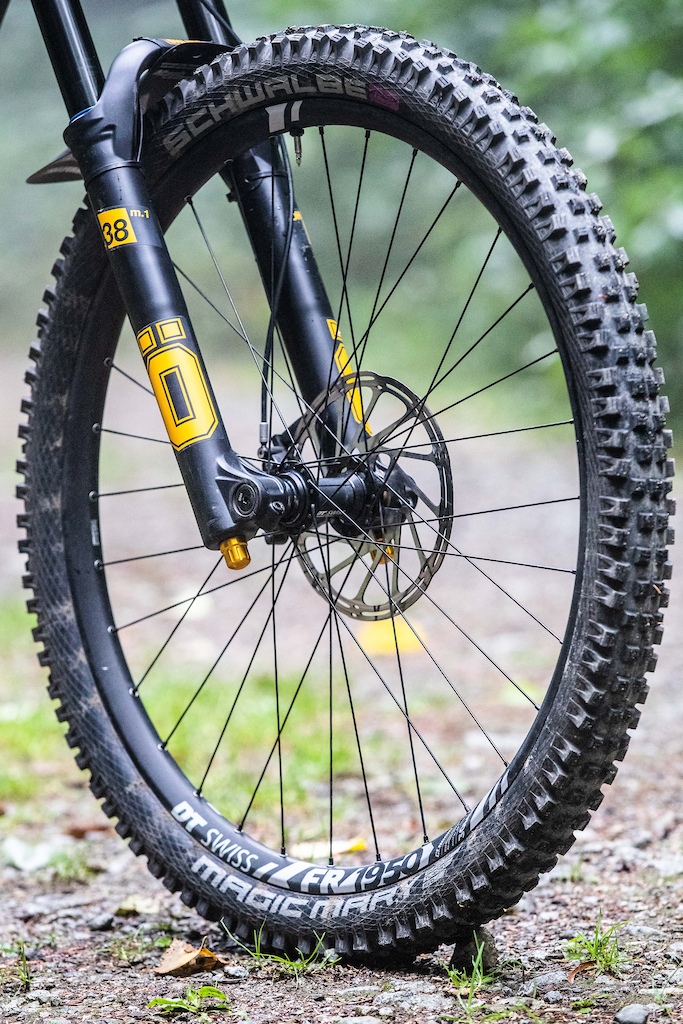


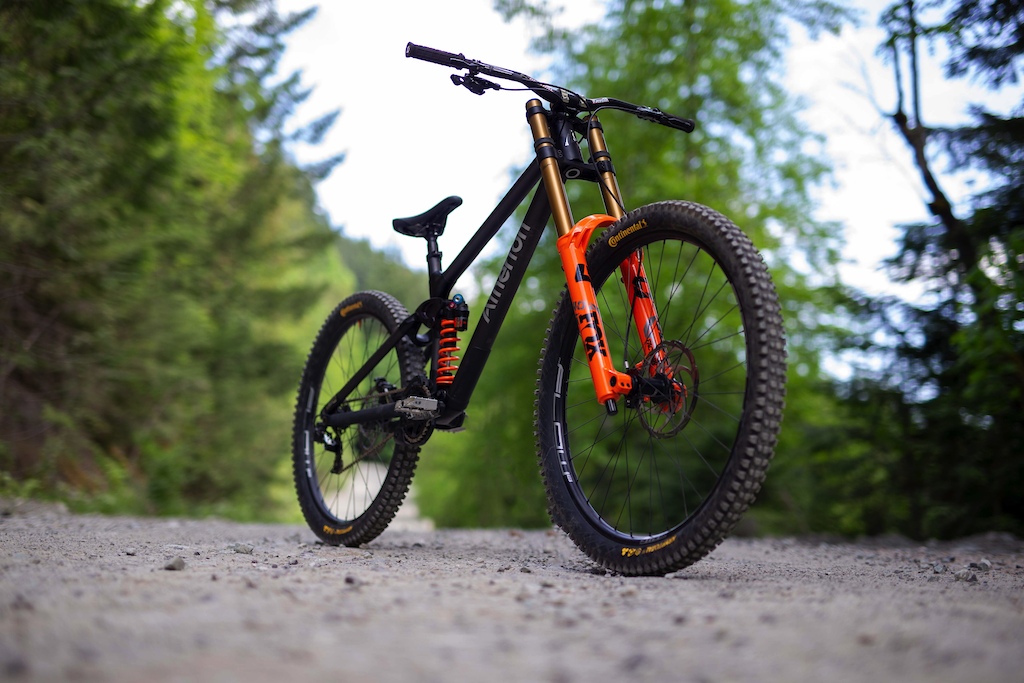

These words, they do not mean what I think you think they mean.
Pedants rejoice.
200/210mm is simply OK so far. Also a longer travel means a higher bottom bracket which is properly awkward.
(...)
XC, Trail, Enduro, DH all running 29" front wheels... seems like they should be trying larger but they don't bother!
www.pinkbike.com/news/bike-check-the-boostmonster-has-a-300mm-marzocchi-super-monster-fork.html
youtu.be/CsbMU-JTCJI?si=DmSNnDKpg-eK9tH9
I mean I guess, even longer wheelbases are a good thing… unless you need to turn.
I feel Like 200mm is a good compromise point for the overall balance of the bike in all directions. I have never thought to myself: my dh bike would be better if it had more travel. I have noticed that it would be better with a better pilot, but I digress…
Maybe there is a clever regressive damper setup that could counter this? I remember the video but don't recall if that is addressed.
still, no one has tried 10" front and back bike otherwise it would be all over the internets. more travel would be useful for gnarly parts and take some away on the flowy jumpy parts but this could be taken care of by low speed compression done right. the bike would be more of a handful to throw around but smash better. i'd experiment with 10" all around because the v10 in 8,5" setting isn't "too much bike" to throw around and i'm only 5'8".
Also, the cross-section profile of the post would be more aerodynamic turned 180 degrees
At 5'10" you're not short at all, and slightly over north American average I believe. So what gives?
And @uponcripplecreek he's not at all small for the bike being reviewed. It's right within the size range, and at 475 for reach really isn't that long. And his height is not 'medium' but taller than average.
Facts people, facts.
calling Manitoba an eastern province or Minnessota being called eastern/atlantic state.
Regardless, for me proprietary=hard no.
Also Banshee legend was at 64 in 2010. Mondraker and Orange too.
primebicycles.com/product/rocket?color=1&build=S&size=XL
Bargain
All the images in this article was shot at ISO 3200, so they should be equaly noisy unless being pushed a lot in post.
This doesn't make any sense. High-pivot does not automatically mean that anti-rise always the same. That's part of reason why some HPs designs are using split-pivots or inverted-horst: to tweak and overall reduce the anti-rise vs a plain single-high-pivot.
WAT?! Emotional breakdown on the way for Matt Beer. LOL!
What sort of compression and rebound settings are you hovering around on the DH38 m.1?
PB your reviews are a joke. I can't believe you're trying to justify this kind of bullshit on a bike.
Cock for cash much?